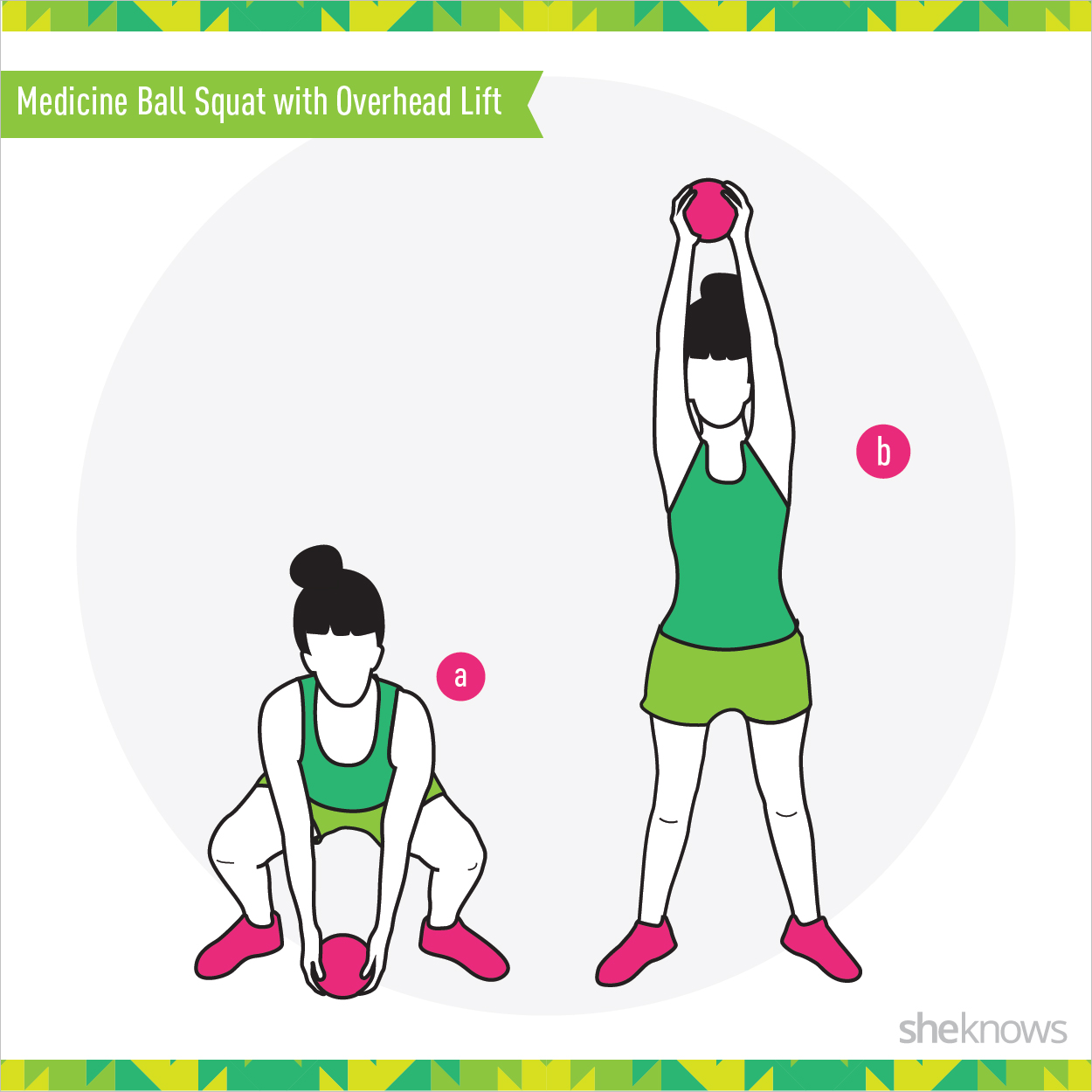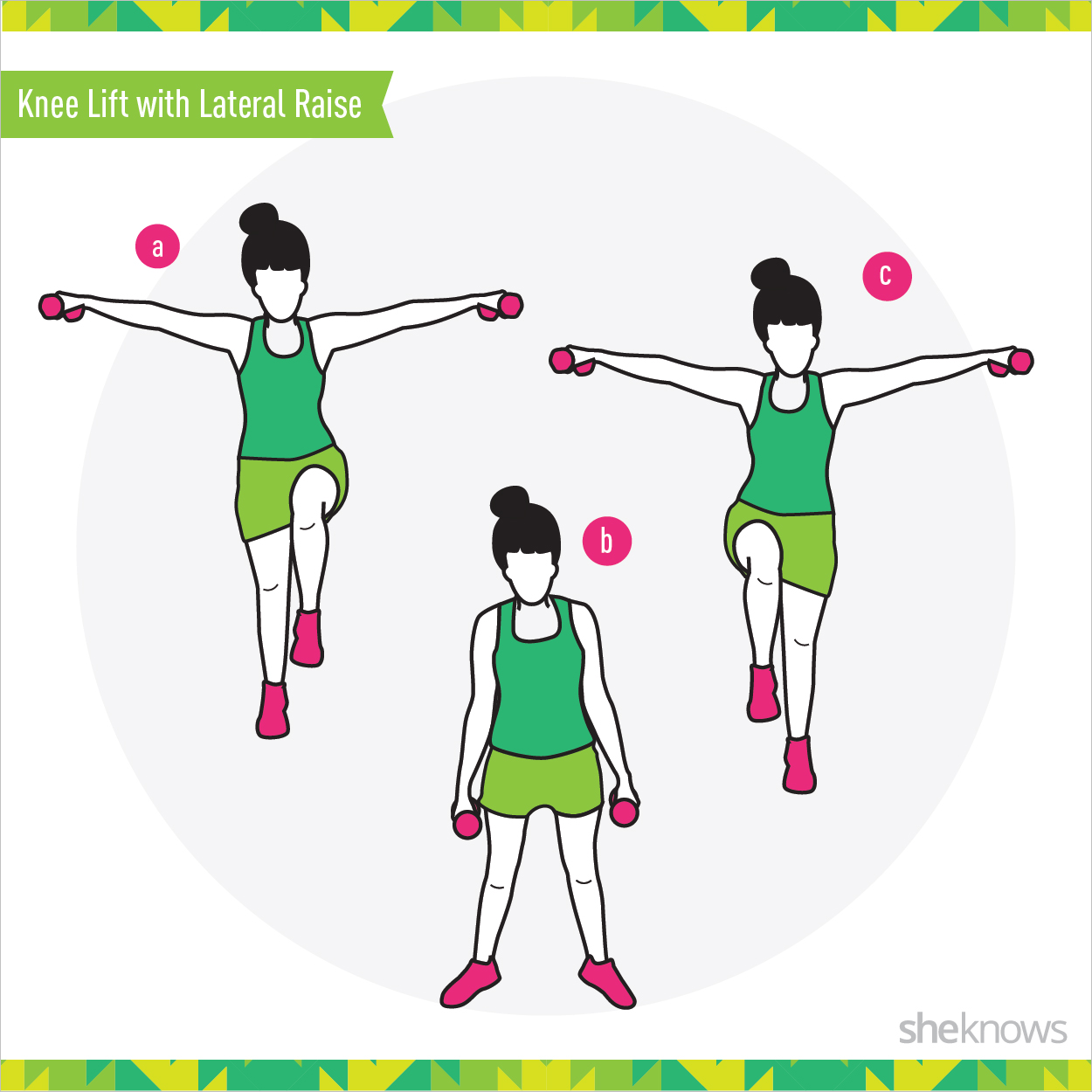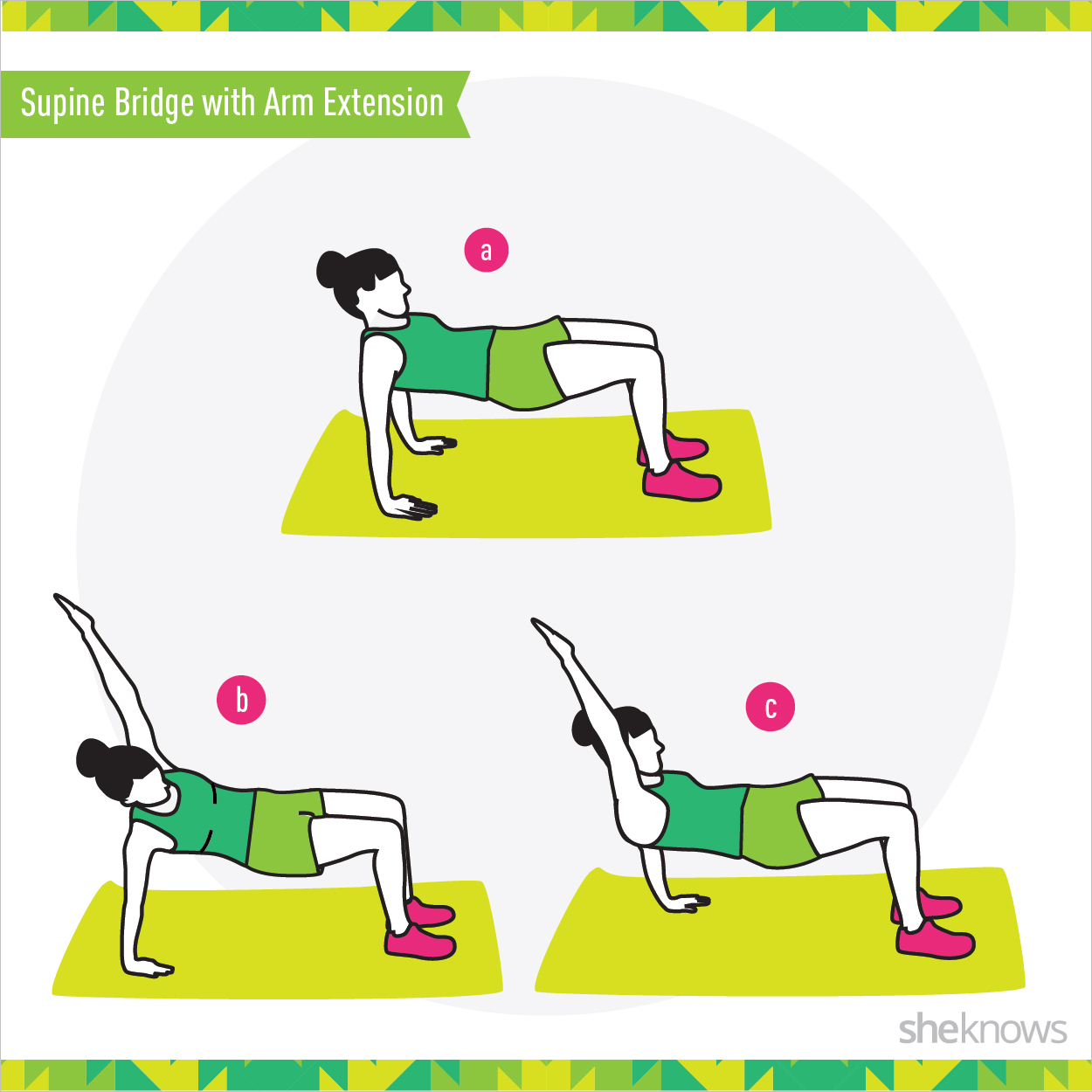Top 10 Functional Exercises for a Full-Body Workout
When you first hear “Functional fitness” it sounds like a trendy new workout that (falsely) promises to tone you up overnight, but don’t let the alliteration in the name fool you: It’s actually a series of exercises that are designed with how you use your body (hence the function!) in mind and train your muscles to be able to accomplish the IRL activities you want to do.
Turns out, functional fitness is serious business — and has tons of benefits for your body. By performing exercises that mimic movement that you would do out in the “real world,” you target multiple muscle groups and reap full-body benefits in less time.
“Functional exercises tend to use multiple joints and numerous muscles. Instead of only moving the elbows, for example, a functional exercise might involve the elbows, shoulders, spine, hips, knees and ankles. This type of training, properly applied, can make everyday activities easier, help reduce your risk of injury and improve your quality of life,” according to the Mayo Clinic. “Functional exercise training may be especially beneficial as part of a comprehensive program for older adults to improve balance, agility and muscle strength, and reduce the risk of falls.”
After just a couple of sessions, you’ll start to improve endurance, balance, posture, strength, coordination and agility from head to toe. And because you have to use your brain to do the moves, time goes by faster than regular workouts. Can’t beat that!
Here are 10 of our favorite functional exercises to give you a full-body workout.
Medicine ball squat with overhead lift

Functionality: Even though you lift your kids and groceries with your arms, your legs and back are also key players. This exercise strengthens your legs, glutes, lower back, arms and shoulders.
Exercise: Stand with your feet wide apart, holding a light medicine ball in front of you with both hands. Squat down, moving your rear back and keeping your knees over your ankles, and lower the medicine ball to the floor, keeping your head up and back straight (don’t hunch). Return to the start position, and lift the medicine ball over your head. Repeat the squat, and lower ball to the ground. Perform three sets of 10 repetitions. Increase the weight of the ball as you get stronger.
Stair climb with bicep curl

Functionality: Whether you have stairs at your house or have to climb them elsewhere, using stairs as part of your fitness program will keep your legs conditioned and toned. Partnering stair climbs with bicep curls will strengthen your arms and improve your ability to carry things up the stairs. This exercise will also boost your cardiovascular fitness.
Exercise: Stand at the bottom of a flight of stairs, holding a 5- to 8-pound dumbbell in each hand. Climb the stairs while performing bicep curls. Walk or run down the stairs while holding the weights, but don’t do curls. Repeat five to 10 times. Increase the dumbbell weight as your arms get stronger, and mix up your climbs by taking two steps at a time for a flight or two.
Hip extension with reverse fly

Functionality: This exercise improves your balance and coordination as well as strengthens your upper, mid and lower back, shoulders, glutes and legs.
Exercise: Stand tall, holding a 5-pound dumbbell in each hand. Extend your right leg back, and place your toe on the floor, keeping your right leg straight. Lean forward slightly at the hips. Lift your right leg behind you as you bring your chest toward the floor and lift your arms straight out, forming a T at your shoulders, squeezing your shoulder blades together and keeping your head in line with your neck. Return to the start position. Repeat 10 to 15 times for each leg. As you get stronger, increase dumbbell weight, and strap 2- to 5-pound weights on your ankles.
Diagonal reach with medicine ball

Functionality: When you reach for your boots on the top shelf of your closet, pay attention to how your body moves — one arm reaches up while the opposite leg slightly lifts to the side. This exercise works all the muscles — arms, shoulders, legs — involved in lifting something diagonally overhead as well as lowering it.
Exercise: Stand tall, holding a medicine ball at your chest with both hands. Lift the medicine ball diagonally overhead to the right, straightening your arms while extending your left leg to the side, making a diagonal line from the medicine ball to your toes. Lower to the start position. Repeat 10 to 15 times for each leg. Increase the weight of the medicine ball, and strap 2- to 5-pound weights on your ankles as you get stronger.
Lunge with back row

Exercise: Holding an 8-pound weight in each hand, step your right foot forward and your left foot back, keeping both heels on the floor and feet pointing straight ahead. Bend your right knee until it is over your right ankle. Lower your chest toward your thigh, bringing your arms perpendicular to the floor, keeping your back flat (don’t hunch) — this is your start position.
Straighten your right leg, row your elbows back, and squeeze your shoulder blades together, keeping your torso angled slightly forward. Return to the start position. Repeat 10 to 15 times for each leg. Increase the weight of the dumbbells as you get stronger. This exercise can also be done with a resistance band looped underneath the front foot.
Knee lift with lateral raise

Functionality: This exercise improves your core strength and balance as well as strengthens and tones your shoulders.
Exercise: Stand tall with a 5-pound weight in each hand, arms to your sides. Lift your right knee until it reaches hip level while lifting your arms straight out to the side to form a “T” at your shoulders. Hold for two seconds, making sure your belly button is pulled back toward your spine, and then lower to the start position. Repeat 10 to 15 times for each leg. Increase the weight of the dumbbells as you get stronger.
Push-up with hip extension

Functionality: This exercise strengthens your chest, shoulder and arm muscles (primarily triceps) as well as your core muscles and glutes.
Exercise: On your hands and knees, place your hands wider than shoulder distance apart. Extend your right leg straight back, and pull your belly button up toward your spine, tightening your core muscles.
Keeping your leg lifted, lower your chest to the ground until each of your elbows is at a 90-degree angle, then push up. Repeat 10 to 15 times for each leg. As you get stronger, increase the angle of your hips, increasing the distance of your knees from your hands. Eventually perform the exercise with straight legs: one leg lifted, the other positioned on your toes.
Torso rotation with medicine ball

Functionality: Strong oblique muscles are key to avoiding lower back injuries. This exercise improves the strength and coordination of all your core muscles and will improve your tone and tighten your waist.
Exercise: Sit on the ground with your knees bent, feet flat on the floor, holding a medicine ball at your chest with both hands. Lean your torso away from your thighs, increasing the angle at your hips and pulling your belly button in toward your spine. Maintaining your hip angle, rotate your torso to the right, moving your right elbow toward the floor behind you. Return to centre, and rotate to the left. Repeat 10 to 15 times for each side. As you get stronger, perform the rotations with straighter arms, or use a heavier medicine ball. Always keep your belly button pulled in.
Supine bridge with arm extension

Functionality: This exercise tones and strengthens your arms, shoulders, back, glutes and legs, as well as targets your core muscles. It also opens up your chest and the front of your hips (muscles that get tight with long hours of sitting and using the computer).
Exercise: Sit on the floor with your hands underneath your shoulders, knees bent and feet flat on the ground. Keeping your arms straight, use your legs to push your hips up toward the ceiling until your torso is flat like a tabletop. Lift your right arm straight up toward the ceiling, rotating your upper body so that it is supported by your left arm, keeping your hips lifted. Lower your right arm to the start position, and just slightly lower your hips, but don’t let them return to the floor. Repeat with your left arm. Repeat 10 to 15 times for each side. As you get stronger, hold your arm and hips up for two seconds before slightly lowering. You can also lay a weighted ankle strap across your hips to increase the weight your legs must lift.
Dynamic prone plank

Functionality: This dynamic exercise tones, lengthens and strengthens just about every muscle in your body. Though it is challenging, it’s a perfect exercise to end with.
Exercise: Get on your hands and toes, facing the floor, keeping your head, back and legs in a straight line and your arms straight underneath your shoulders. Lift your rear toward the ceiling, pulling your belly button into your spine, forming a pike or downward dog yoga position, lengthening your arms and legs. Return to plank position, and bend your elbows against your sides, lowering your torso and legs to the floor. Keeping your lower body flat on the floor, use your arms to push your chest and head up toward the ceiling, similar to the cobra pose in yoga, stretching out the front of your body. Lower yourself, and push your body back into plank position. Repeat five to 10 times. As you get stronger, increase the number of repetitions.